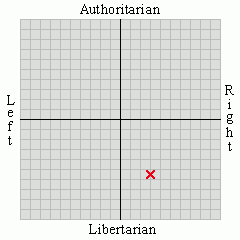It's hard to say whether the highlight of the weekend was a visit from my father or the blind-tasting party we threw in his honor. Both were highly enjoyable, and Dad was at the party so that meant not having to choose between spending time with him and our monthly wine event.
The wine party is of more generalized interest, so here's the details of how that works. We took about a half dozen bottles of wine from the cabinet, everything from a Two Buck Chuck to one of the princes of our recent expedition to Santa Maria. I had six bottles picked out. Then Dad announced that his contribution would be a white from New Zealand he'd found, so that meant I had to find a white of my own to add to the mix. Two more guests also brought bottles of their own so that was ten wines total.
For each bottle of wine, take out one brown paper bag. The kind that you use to pack a lunch should be good. Label each bag with a magic marker, picking whatever themes you want. Because my Dad has been involved in aviation, we picked airplane code names like "Hornet," "Raptor," "Phantom," and "Blackbird." Uncork each bottle, cutting away the neck film if that contains any identifying information. Each bottle of wine goes in a randomly-selected paper bag. The end result is that no one knows which wine is in which bag. If you've got a white that needs to stay chilled, put it in a paper bag first, and then put that in a plastic bag to keep it dry, so you can keep the wine in ice water.
Then, everyone samples the wines, and rates them from one to ten. We played a party game for people to try and guess which wine was which, and despite a wide variance in the varietals presented, the best score was 4 out of 10. At our party, we had people with a wide range of wine experience -- my father and I are both reasonably experienced wine enthusiasts, and some of our guests were nearly first-time wine drinkers. This is fine for our purposes; part of the fun is seeing how people with different tastes react to the wines.
Here's the results, with scores normalized to percentage of approval:
Trader Joe's Reserve Cabernet Sauvignon, California 2005: 72%
Dubost Tempranillo, San Benito County 2004: 70%
Matua Valley Cabernet Sauvignon, New Zealand 2006: 67%
Leona Valley Winery Petite Verdot, Los Angeles County 2005: 62%
Machiavelli Chianti Classico Riserva, 2001: 53%
Francis Ford Coppola Shiraz, California 2006: 52%
Addamo Vineyards Dolcetto, Santa Barbara County 2005: 50%
Angeles Crest Winery Cabernet Sauvignon, Los Angeles County 2002: 48%
Arthur Earl Pinot Grigio, Santa Barbara County 2006: 45%
Charles Shaw Gamay Beaujolais, France-California blend 2006: 42%
The most fun was seeing how the different wines did. Now, to some extent the test wound up not being entirely fair anyway. Beaujolais is best drunk very young, so we should have found some 2008 Beaujolais rather than two-and-a-half year old stuff. One wonders what a more primed Two Buck Chuck would have done in the blind tasting. And whites are not what Arthur Earl winery does best, and on top of that, Pinot Grigio has such a light taste anyway it might have seemed like grape water. The Coppola Shriaz might need another year or two. But I would have thought that the Chianti would be peaked -- maybe it's past its peak. Certainly the 2002 Cabernet should have been right at its peak, and it pretty much bombed.
Ten wines was, I think, too much. Eight would have been better.
On cost -- the two least expensive wines were on the very top and the very bottom of the list. I picked up that TJ's Cabernet Sauvignon for about ten dollars and I enjoyed it very much, and clearly I wasn't alone. A friend brought the Tempranillo, so I've no idea how much it costs; certainly it has the look of an expensive winery. I'm just finishing it off right now. Most of the rest of these wines are at about the twenty- to thirty-dollar price point. Cost is perhaps a general indicator to the novice consumer of quality, but there is wide margin for error on both ends of the price spectrum -- an inexpensive wine may be quite pleasing, and an expensive one may be not so much.
But the important thing is to do the tasting blind. The paper bags added a humorous touch, but more importantly they deprived us of clues about what we were drinking and forced us to examine just the wine on its own merits.
March 1, 2009
Subscribe to:
Post Comments (Atom)







1 comment:
That sounds refreshing. Great aricle. For more about grapes and grape growing, visit here: http://goinggrapes.com/
Post a Comment